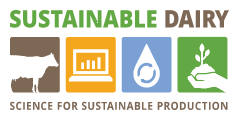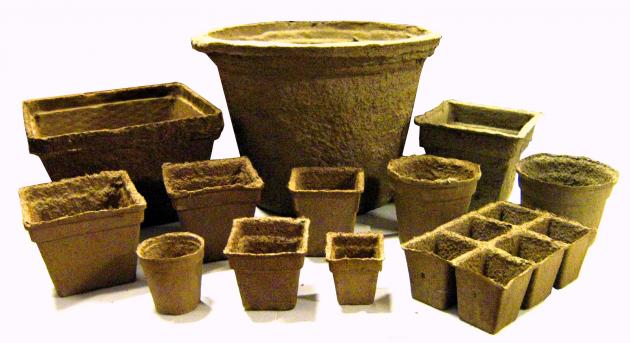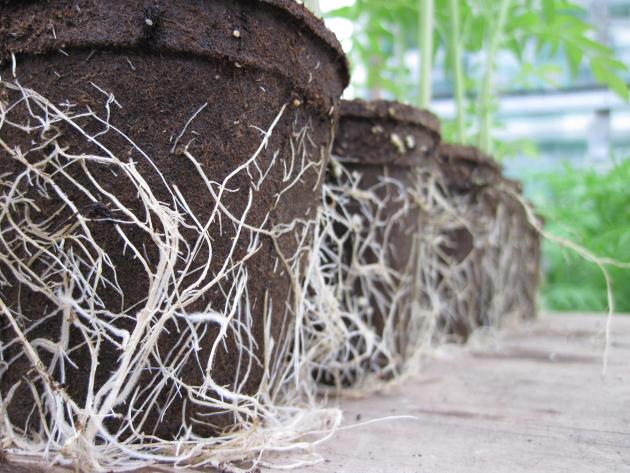Proceedings Home | W2W Home 
Purpose
In recent years, there has been negative publicity in the media related to the sustainability of beef. In response, there has been a demand from within and outside of the industry for a scientific study to quantify the sustainability of beef over its full life cycle. This type of request has been given to many of the major food commodities, so a number of sustainability studies are underway or complete. Beef is one of the most complex systems though for this type of analysis. This beef industry life cycle assessment (LCA) is being conducted to establish benchmarks in various measures of sustainability and to identify opportunities for improvement. These types of analyses are important to promote consumer confidence in our food products.
What did we do?
A national assessment of the sustainability of beef is being conducted in collaboration with the National Cattlemen’s Beef Association through the support of the Beef Checkoff. This includes surveys and visits to cattle operations throughout the U.S. to gather production information. With this information, representative production systems are being modeled and evaluated through a cradle-to-farm gate LCA. So far, the environmental impacts of representative production systems have been evaluated for 5 of 7 geographic regions including the Southern Plains, Northern Plains, Midwest, Northwest and Southwest. To complete the full LCA, post-farm gate data were obtained from harvesting and case-ready facilities, retailers, and restaurants while consumer data were obtained from literature and public databases. These data were combined to quantify sustainability through a full cradle – to – grave life cycle assessment.
What have we learned?
Preliminary LCA results have been obtained using the farm gate and post farm gate information obtained thus far. The environmental impacts of cattle production systems vary widely, with more variation within regions than among regions. For individual production systems, total greenhouse gas emissions (carbon footprint) ranges from 17 to 36 kg CO2e/kg carcass weight (CW) with regional means around 20 kg CO2e/kg CW. Regional values for fossil energy use, non-precipitation water use and reactive nitrogen loss are 40-50 MJ/kg CW, 400-6500 l/kg CW and 120-180 g N/kg CW, respectively. To assess the full life cycle of beef, the BASF eco-efficiency analysis methodology is used with the functional unit or consumer benefit being 0.45 kg (1 lb) of consumed boneless edible beef. The full life cycle carbon footprint of beef is 43-50 kg CO2e/kg of consumed beef with about 85% of this footprint related to cattle production, 10% related to the consumer and l! ess than 5% related to processing, packaging, transport and retail. Other impact metrics include water emissions, cumulative energy demand, land use, acidification potential, photochemical ozone creation potential, ozone depletion potential, abiotic depletion potential, consumptive water use, and solid waste disposal. An initial assessment indicates that feed and cattle production phases are the largest contributors to most of these environmental impact categories. Eco-efficiency improvements are being made in cattle production through increased crop yields and more efficient use of resource inputs such as fertilizer and feed. Beneficial improvements among processors include increased use of natural gas in lieu of fuel oil, biogas capture and use from wastewater lagoons at harvesting plants, packaging optimizations, and improvements in water use efficiency. This LCA is the first of its kind for beef and has been third party verified in accordance with ISO 14040:2006 and 14044:2006 a! nd 14045: 2012 standards.
Future Plans
Surveys, visits and farm gate analyses will be completed this year for the Southeast and Northeast regions. All of the regional data will then be used along with expanded data from post farm gate processes to form the full national LCA. The national LCA will be completed in collaboration with the University of Arkansas using the SimaPro LCA software.
Corresponding author, title, and affiliation
C. Alan Rotz, Agricultural Engineer, USDA/Agricultural Research Service
Corresponding author email
Other authors
Senorpe Asem-Hiablie, Agricultural Engineer, USDA/ARS;Tom Batttagliese, Global Sustainability Metrics Manager, BASF Corporation; Kim Stackhouse-Lawson, Director of Sustainability, JBS USA (Formerly with the National Cattlemen’s Association)
Additional information
Asem-Hiablie, S., C.A. Rotz, J. Dillon, R. Stout and K. Stackhouse-Lawson. 2015. Management characteristics of cow-calf, stocker, and finishing operations in Kansas, Oklahoma and Texas. Prof. Anim. Scientist 31:1-10.
Asem-Hiablie, S., C.A. Rotz, R. Stout and K. Stackhouse-Lawson. 2016. Management characteristics of beef cattle production in the Northern Plains and Midwest regions of the United States. Prof. Anim. Scientist 32(6):736-749.
Asem-Hiablie, S., C.A. Rotz and R. Stout. 2016. Characteristics of beef cattle operations in the Midwest. Beefacts, National Cattlemen’s Beef Association, Centennial, CO.
Asem-Hiablie, S., C.A. Rotz and R. Stout. 2016. Characteristics of beef cattle operations in the Northern Plains. Beefacts, National Cattlemen’s Beef Association, Centennial, CO.
Rotz, C.A., S. Asem-Hiablie, J. Dillon and H. Bonifacio. 2015. Cradle-to-farm gate environmental footprints of beef cattle production in Kansas, Oklahoma, and Texas. J. Anim. Sci. 93:2509-2519.
Rotz, C.A., B.J. Isenberg, K.R. Stackhouse-Lawson, and J. Pollak. 2013. A simulation-based approach for evaluating and comparing the environmental footprints of beef production systems. J. Animal Sci. 91:5427-5437. 2013.
Acknowledgements
Funded in part by The Beef Checkoff and the USDA’s Agricultural Research Service. The authors thank Kathleen Fisher and others of the National Cattlemen’s Beef Association for their help in obtaining information supporting this analysis.
The authors are solely responsible for the content of these proceedings. The technical information does not necessarily reflect the official position of the sponsoring agencies or institutions represented by planning committee members, and inclusion and distribution herein does not constitute an endorsement of views expressed by the same. Printed materials included herein are not refereed publications. Citations should appear as follows. EXAMPLE: Authors. 2017. Title of presentation. Waste to Worth: Spreading Science and Solutions. Cary, NC. April 18-21, 2017. URL of this page. Accessed on: today’s date.


 ost basic then drilling down to peer-reviewed publications, data from life-cycle assessment studies and models related to the topics. The Virtual Farm focuses on decision makers and stakeholders including consumers, producers, policymakers, scientists and students who are interested in milk production on modern dairy farms. The top entry level of the site navigates through agricultural topics of interest to the general public. Producers can navigate to a middle level to learn about practices and how they might help them continue to produce milk for consumers responsibly in a changing climate while maintaining profitability. Featured beneficial (best) management practices (BMPs) reflect options related to dairy sustainability, climate change, greenhouse gas emissions, and milk production. Researchers can navigate directly to deeper levels to publications, tools, models, and scientific data. The website is designed to encourage users to dig deeper and discover more detailed information as their interest develops related to sustainable dairies and the environment.
ost basic then drilling down to peer-reviewed publications, data from life-cycle assessment studies and models related to the topics. The Virtual Farm focuses on decision makers and stakeholders including consumers, producers, policymakers, scientists and students who are interested in milk production on modern dairy farms. The top entry level of the site navigates through agricultural topics of interest to the general public. Producers can navigate to a middle level to learn about practices and how they might help them continue to produce milk for consumers responsibly in a changing climate while maintaining profitability. Featured beneficial (best) management practices (BMPs) reflect options related to dairy sustainability, climate change, greenhouse gas emissions, and milk production. Researchers can navigate directly to deeper levels to publications, tools, models, and scientific data. The website is designed to encourage users to dig deeper and discover more detailed information as their interest develops related to sustainable dairies and the environment. What did we do?
What did we do? 




